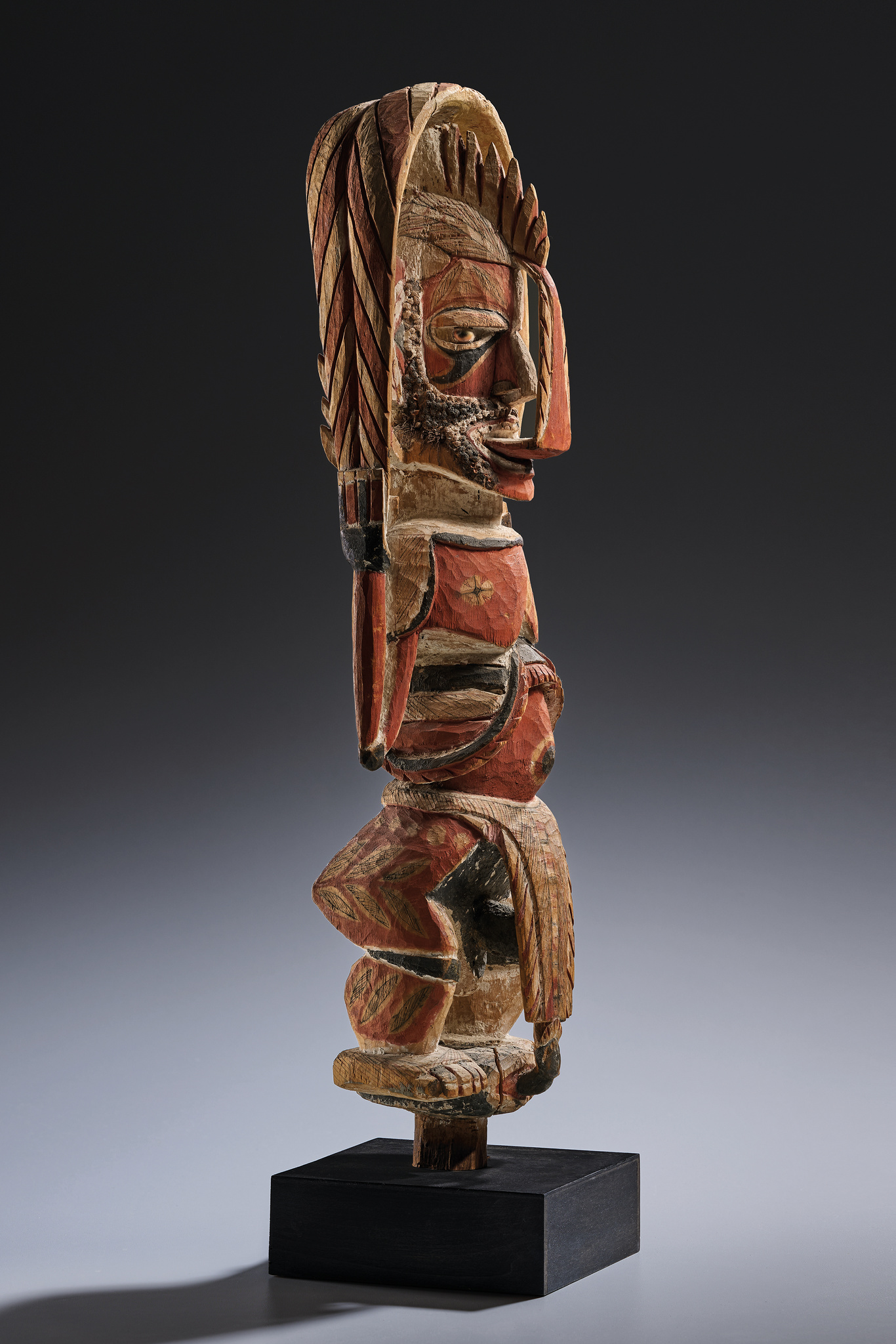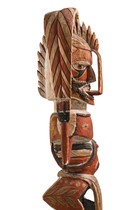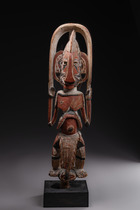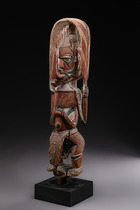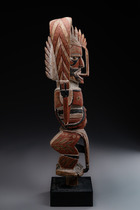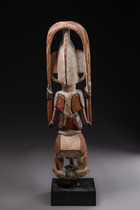Excellente figure "malagan", avant 1899 · Papouasie-Nouvelle-Guinée - Archipel Bismarck - Nouvelle Irlande · ID: 3052085
Linden-Museum, Stuttgart, Germany (1899)
Ludwig Bretschneider, Munich, Germany (1959)
Description
wood, lime, red ochre, black pigment, shell inlay, blackish mass, seeds, plant fibre, handwritten in black ink: “4461 - Dr. Hahl.”, rest., base
According to the inventory book of the Linden Museum Stuttgart, this figure entered the museum’s collection in 1899 as a donation from Dr. Albert Hahl. It is recorded as a “carved wooden figure” with the historical provenance “New Mecklenburg, North.” On March 6, 1959, it was transferred in exchange to Ludwig Bretschneider.
The term “malagan” refers to a complex series of ceremonies and the visual art forms associated with them.
“Malagan” rites mark almost all the important stages in the lives of the inhabitants of New Ireland. Throughout life, individuals seek to acquire rights to specific “malagan” images and the rituals associated with them. Men, in particular, compete to obtain rights to the greatest number of “malagan”, possession of which confers status and prestige.
The most spectacular “malagan” carvings are created and displayed during the final memorial ceremony honouring the deceased, which, due to the great expense and extensive preparations involved, often occurs months or years after a person’s death. The aim of this ceremony is to “finish the dead”. This is done by remembering him with all his achievements for one last time - and then forgetting him. This approach requires that all of the deceased’s legal and personal matters be settled, that his land and other rights be transmitted, and that his positions in clan and community be taken over by successors. On a more esoteric note, it includes the recapturing of his life force, the energy of which is thought to reside in the “malagan” objects during the festival, and to be dispersed and activated among the participants at the end of the ceremony.
The feast includes the construction of a “malagan” house for the presentation of the art objects, the appearance of masked dancers at dawn, the exchange of larger quantities of shell money, the feasting on large amounts of taro, pork and bananas and the slaughtering of a vast numbers of pigs that are presented in front of the “malagan” house while respected elders offer speeches and preside over the ritual exchange that closes the ceremony.
Afterwards, the “malagan” carvings, having served their purpose, are destroyed, allowed to rot, or sold to outsiders.
After studying law and economics, Albert Hahl joined the German colonial service in 1895. He initially served as an imperial judge in the Bismarck Archipelago (1896–1898). By 1899, he assumed the position of Vice-Governor, and in 1902, that of Governor of German New Guinea. In resolving conflicts, he relied not on harsh punitive measures, but on the involvement of local dignitaries (“Luluai”). Hahl established several government stations in the Bismarck Archipelago, northeastern New Guinea, and the German Solomon Islands.
He was an avid collector of local material culture. Many of the artifacts he gathered can now be found in German museums such as the Grassi Museum in Leipzig, the Stuttgart Linden Museum, the Museum Fünf Kontinente in Munich, and the Natural History Museum in Nuremberg.
Hahl left German New Guinea shortly before the outbreak of World War I. After the conflict, he retired from colonial service. While he stayed active in the political engagement to recuperate the German colonies, he never joined the wave of German national resentment.

